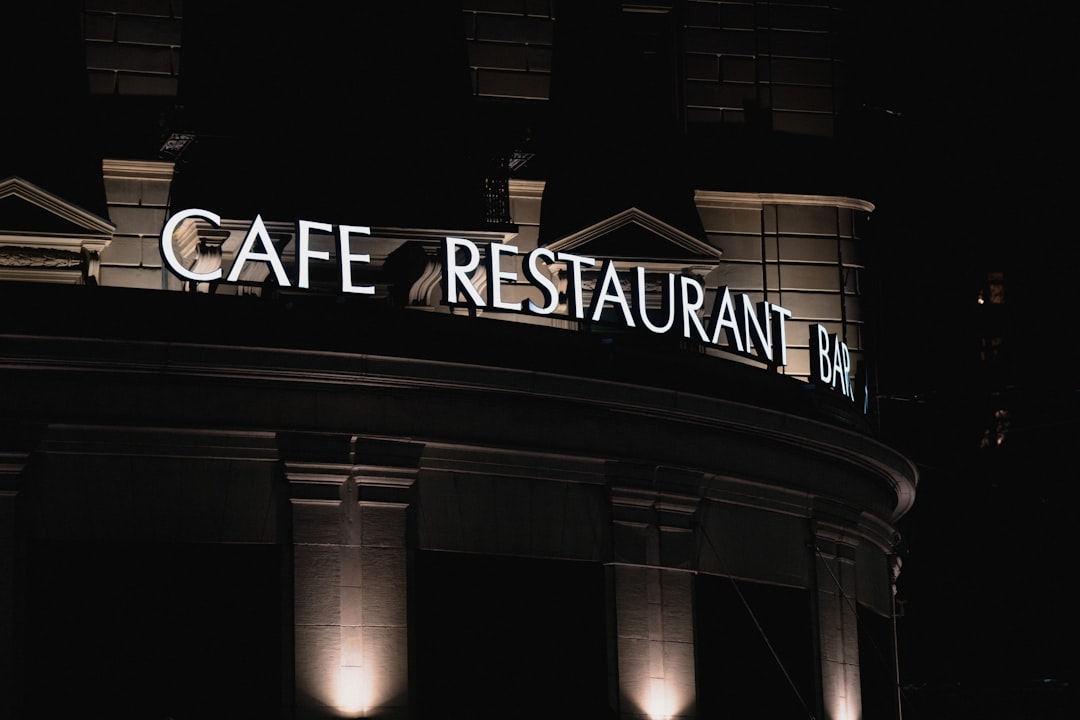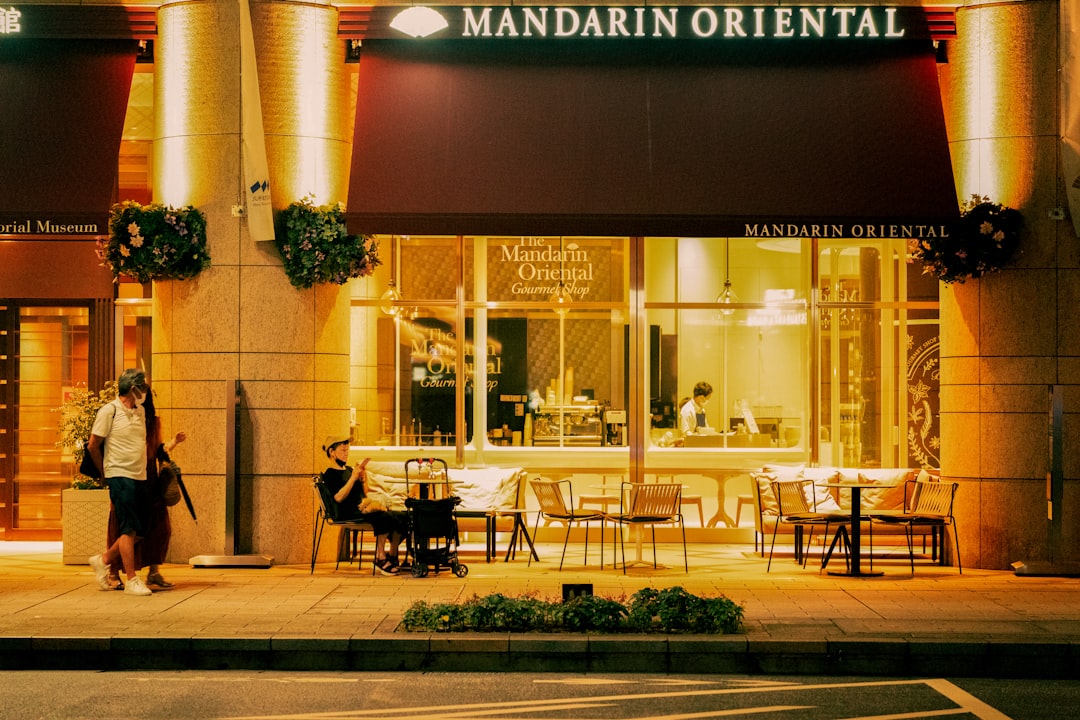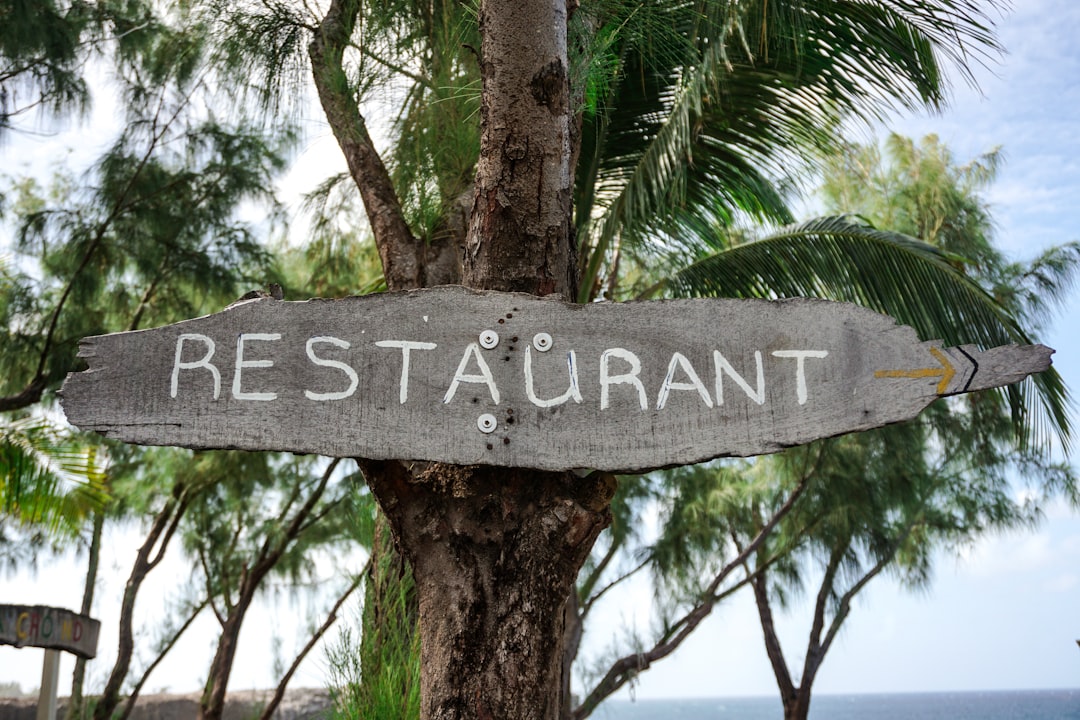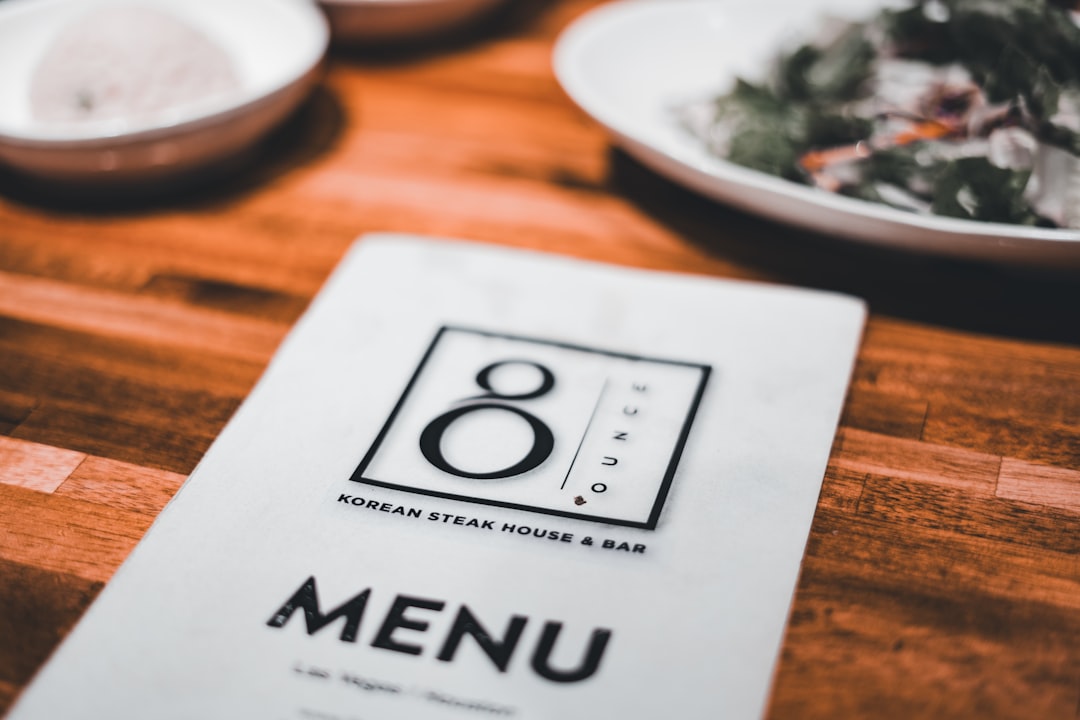

Engage prospects with a scan and streamline customer engagement with FREE QR code marketing tools by Sona – no strings attached!
Create a Free QR CodeFree consultation

No commitment

Engage prospects with a scan and streamline customer engagement with FREE QR code marketing tools by Sona – no strings attached!
Create a Free QR CodeFree consultation

No commitment
Restaurant management companies today face a constant push to innovate, streamline operations, and deliver exceptional customer experiences in an industry shaped by rapid digital transformation. As restaurant patrons increasingly expect touchless, unified, and memorable interactions, bridging the gap between physical spaces and digital engagement becomes essential for ongoing growth and relevance. QR codes make that bridge seamless, allowing guests to move from a printed trigger to a digital action in seconds without apps or friction.
Yet, many operators still contend with missed high-value opportunities as prospective visitors engage in ways that are not captured by legacy systems or CRMs. Front-of-house teams struggle to identify and act on guest preferences when visitor data remains anonymous or siloed. QR codes are emerging as a practical solution to these challenges. They offer restaurant management companies a powerful way to connect diners, staff, and technology while simplifying menu access, driving upsell opportunities, and gathering real-time feedback. With the right strategy, every table, sign, and receipt becomes an actionable digital touchpoint that supports marketing, operations, and growth.

QR codes serve as the bridge between print and digital, transforming static surfaces into measurable, interactive experiences. For restaurant management companies, this means replacing outdated workflows, capturing richer data at the source, and aligning every step of the dining journey with a clear business outcome. When deployed correctly, QR campaigns unify the front-of-house, kitchen, and marketing teams while delivering a better guest experience.
Start by connecting your core objectives to specific QR-enabled actions. If the goal is to increase average check size, create table-side codes that open limited-time add-ons or beverage pairings. If you want to improve review volume and quality, place QR codes on receipts that link to a post-meal survey and redirect happy guests to preferred review sites. Replace analog processes like paper sign-up sheets, clipboards for event RSVPs, and printed menus with dynamic QR destinations that capture intent while reducing manual work and errors.
For example, a group that once relied on paper forms for banquet inquiries can replace them with QR-driven digital forms on print flyers, private dining menus, and lobby signage. The result is fewer lost leads, faster follow-up, and a consistent data structure that feeds the CRM. Over time, operators learn which campaigns and venues generate higher-intent planners, enabling smarter investments and personalized outreach.

Restaurant management companies must balance guest satisfaction, operational efficiency, and cost control. QR codes address key friction points that often result in missed revenue or diminished loyalty. They simplify complex moments, such as navigating allergen information at the table or reordering a favorite item for pickup, and they turn anonymous actions into measurable signals that your team can use.
QR codes also unlock agility. QR code menus, promotions, and event calendars can change daily without reprinting. Marketing teams gain attribution fidelity that is impossible with offline materials alone, while operations teams reduce manual tasks like distributing Wi-Fi passwords or collecting feedback on paper cards.
In practice, this means moving beyond a one-time menu QR to a fully integrated approach. Use table tents for upsells, check presenters for reviews and loyalty, entry signage for waitlists, and takeout packaging for reorders. Each touchpoint becomes a data source that informs menus, staffing, and advertising.

Different QR formats serve different goals. Selecting the right type ensures your codes are user-friendly, secure, and trackable. Dynamic QR codes are generally best for restaurant management because they allow edits after printing, support A/B testing, and provide analytics that feed your CRM and attribution models.
Start with your desired action, then match it to the appropriate format. For example, use web link QR codes for menus and online ordering, SMS or email templates for instant feedback, and Wi-Fi onboarding to reduce operational friction at the host stand. For private dining and catering, vCards can put a sales manager’s contact details directly into a planner’s phone.
With a centralized platform like Sona QR, operators can generate all these formats, update destinations without reprinting, and centralize analytics by location, placement, and campaign. This flexibility preserves design consistency across concepts while enabling rapid iteration.

Deploy QR codes where the physical flow of your restaurant meets guest decision-making. Focus on placements where behavior is already happening, then prompt a next step that benefits both the guest and the business. The goal is to identify moments that previously went untracked and turn them into measurable interactions that compound over time.
Map your guest journey from curb to couch. Think in terms of pre-visit awareness, on-premise engagement, and post-visit retention. Each of these phases includes specific surfaces and materials that can carry a QR code and a purposeful call to action.
Prioritize placements that align to measurable actions like order starts, list sign-ups, survey completes, and app downloads. Over time, you will see which surfaces drive the most revenue and which need new creative, better CTAs, or different offers.

QR codes shine when they are embedded into common guest interactions, not treated as an afterthought. Choose three to five core use cases to pilot, ensure each has a strong CTA, and connect the resulting data to your CRM. This approach allows you to understand what is working before scaling across locations.
The following examples represent high-impact, repeatable deployments that improve experience and yield actionable insights in restaurant marketing. Each one converts anonymous interest into a trackable signal that your team can use to personalize and optimize.
Use Case | Description | Outcome --- | --- | --- Digital menus | QR codes on tables or signage link diners to always up-to-date menus or daily specials | Reduced printing costs and improved menu accuracy, plus analytics on item interest and guest preferences Table-side ordering | Codes enable guests to initiate orders, add items, or request service directly from their mobile devices | Faster service and higher average check sizes, with clear engagement signals for upsell readiness Automated feedback and reviews | Post-meal QR codes on receipts or packaging nudge for instant feedback or reviews | Increased response rates and real-time insights that inform training, menu changes, and reputation management
Expanding on these, consider adding QR codes to private dining brochures that open a short inquiry form with preferred dates and party size or to catering menus that let planners download a quote instantly. For multi-brand restaurant groups, align destinations to each concept’s positioning and lifecycle stage. A fast casual concept may drive reorders and app downloads, while a fine dining concept emphasizes reservations and private events.
The key is to ensure that every use case ties to a clear KPI, such as scans per 100 covers, feedback completion rate, or reorder conversion. Use A/B tests to iterate on copy and design elements like placement, color, and CTA phrasing.
Each QR scan captures valuable context: where the guest was, what they were doing, and what they likely want next. By deploying multiple QR codes across the journey and tagging each by intent and location, restaurant management companies can segment audiences automatically and build targeted follow-up campaigns that feel helpful rather than generic.
Start by mapping the funnel. Awareness scans often come from storefront posters and direct mail. Consideration scans often come from menu exploration and event calendar views. Conversion scans come from order starts, reservation requests, and feedback submissions. Each category deserves a distinct follow-up path and message cadence.
For restaurants with multiple concepts, create shared audiences for cross-promotion. A group that identifies wine enthusiasts via table-side pairing scans can invite them to chef dinners across sister properties. Meanwhile, guests who engage with family bundles via takeout packaging can be targeted with weeknight offers or app-only reorder deals.
QR codes become most powerful when they connect channels that were previously siloed. Use them to create a through-line from print and in-venue materials to your website, ordering platforms, and CRM. This approach centralizes data capture, eliminates dead ends, and allows real-time optimization across your marketing ecosystem. For multi-touch attribution, see Sona’s blog post titled single vs multi-touch attribution models.
Design each campaign for the channel environment. A code on a busy entrance requires a large format and minimal copy. A code on a check presenter can include a short incentive and a clear ask like Scan to Rate Your Server. Consistency in style and CTA language supports recall and raises scan rates.
A centralized platform like Sona QR streamlines code creation, destination routing, and analytics across channels. It also integrates with your CRM so scan activity fuels identity resolution, journey mapping, and attribution.
Clarify the single outcome you want to drive first. For restaurants, typical goals include digitizing menu access, increasing add-ons at the bar, collecting post-meal feedback, or promoting frictionless reorders for takeout. Start with one or two high-traffic placements so you can test quickly and learn fast.
Choose between static and dynamic QR codes. Static codes are acceptable for fixed destinations like a permanent PDF. Dynamic codes are preferable for menus, promotions, and anything you might change later since they enable edits and analytics without reprinting.
Good design drives adoption. Make the QR code easy to notice and scan. Provide a benefit-oriented prompt so guests know what they will get. Test across lighting conditions, device types, and scanning distances before rollout.
Roll out in phases, beginning with the placements most likely to deliver quick wins. Consider operation types and guest flow. What works at a fast casual concept might differ from a fine dining brand with check presenters and reservation-heavy traffic.
Instrument everything. Name codes clearly, attach UTM parameters to every destination, and automate data sync into your CRM. Review performance weekly and iterate based on what the data shows.
For restaurant management companies, the value of QR codes grows exponentially when scan data connects to guest identity and revenue outcomes. Tracking alone is not enough. You need to understand which scans turn into orders, reservations, reviews, or event bookings, then attribute those outcomes back to channels and creative that drove them.
A modern stack connects your QR platform, ordering system, reservation tool, email and SMS providers, and CRM. With this setup, you can map a complete journey: a guest scans a table tent, views a menu, starts an order, joins loyalty, and returns for a reorder prompted by a campaign. These links enable smarter decisions about budget allocation, staffing, merchandising, and offer strategy.
When every table, poster, and receipt becomes a measurable touchpoint, you can budget confidently and prove impact. Over time, you will learn not only what guests scan, but why they act, and which experiences create durable loyalty.
Once your core use cases are in place, expand methodically. Keep the guest experience central and let data guide where to scale. Train staff to promote scanning naturally, bake QR prompts into scripts, and reward teams for hitting scan and conversion goals that support their section or shift.
Lean on automation so that each scan triggers the next best action without manual work. When your tools integrate, QR journeys become a quiet engine for growth, nurturing guests from first scan to repeat visits.
Creative deployment ideas include QR-powered punch cards for coffee counters that sync with your loyalty app or coasters at the bar that rotate through seasonal cocktail videos and tips. For catering, add QR codes to proposal PDFs that let planners book a tasting instantly and notify the events team in real time.
QR codes are a strategic advantage for restaurant management companies. They turn menus, receipts, posters, and packaging into digital entry points that capture intent and shorten the path from awareness to action. When connected to a CRM and an attribution layer, they also produce the data you need to personalize experiences, optimize spend, and grow profitably across locations and concepts.
Beyond instant menu access or frictionless ordering, QR adoption closes the biggest data gaps facing restaurant operators. It surfaces previously anonymous guest signals, enriches profiles with behavior and context, minimizes manual errors in segmentation, and aligns messaging to each stage of the journey. As industry expectations evolve, operators who integrate QR across operations and marketing will lead in engagement, efficiency, and long-term growth.
If you are ready to get started, begin with one or two high-impact placements, choose dynamic QR codes, and measure results rigorously. Platforms like Sona QR make it simple to create, manage, and track codes, then sync engagement data to your CRM and ad accounts. Build momentum with quick wins at the table and on the receipt, then scale across your brand portfolio with confidence. Start creating QR codes for free.
QR codes have transformed restaurant management companies from traditional operational frameworks into dynamic, customer-centric engagement platforms. Whether it’s streamlining reservations, enhancing menu accessibility, or gathering real-time feedback, QR codes replace cumbersome processes with seamless, mobile-friendly interactions that boost customer satisfaction and operational efficiency. Imagine instantly knowing which promotions drive repeat visits or which dining experiences resonate most with your guests.
With Sona QR, you can create dynamic, trackable QR codes in seconds, update campaigns without reprinting menus or materials, and connect every scan directly to increased reservations and revenue. No wasted effort, no missed opportunities—just smarter, more profitable restaurant management strategies.
Start for free with Sona QR today and turn every scan into an opportunity for growth, engagement, and lasting customer loyalty.
QR codes simplify menu access, drive upsell opportunities, gather real-time feedback, reduce manual tasks, increase data capture, enable dynamic content updates, and improve guest experience while enhancing operational efficiency.
They can improve customer experience by deploying QR codes for touchless interactions, offering digital menus and ordering, enabling easy feedback submission, reducing wait times with contactless check-ins, and personalizing offers based on guest behavior.
They use dynamic QR codes to provide always up-to-date digital menus that can be changed without reprinting, track item interest and guest preferences, and reduce printing costs while improving menu accuracy.
Latest trends include integrating QR codes for seamless digital engagement, using dynamic and trackable QR codes, connecting scan data to CRM and marketing platforms, employing multi-touch attribution models, and leveraging real-time analytics for operational decisions.
They enhance efficiency by replacing analog processes with digital QR code workflows, automating data capture, reducing manual errors, streamlining guest Wi-Fi access, simplifying event RSVPs, and enabling faster follow-up through centralized data systems.
Use Sona QR's trackable codes to improve customer acquisition and engagement today.
Create Your FREE Trackable QR Code in SecondsJoin results-focused teams combining Sona Platform automation with advanced Google Ads strategies to scale lead generation

Connect your existing CRM

Free Account Enrichment

No setup fees
No commitment required

Free consultation

Get a custom Google Ads roadmap for your business






Launch campaigns that generate qualified leads in 30 days or less.
